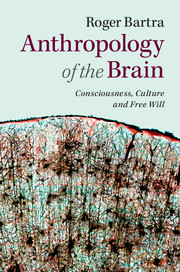Book contents
- Frontmatter
- Contents
- Preface
- Part I Consciousness and symbolic systems
- 1 The hypothesis
- 2 Evolution of the brain
- 3 Brain plasticity
- 4 Is there an internal language?
- 5 Amputations and supputations
- 6 The atrophied exocerebrum
- 7 The symbolic substitution system
- 8 Neuronal mirrors
- 9 Consciousness within hand’s reach
- 10 Outside and inside: the immense blue
- 11 The musical spheres of consciousness
- 12 Artificial memory
- 13 The lost soul
- Part II Brain and free will
- Bibliography
- Index
2 - Evolution of the brain
Published online by Cambridge University Press: 05 June 2014
- Frontmatter
- Contents
- Preface
- Part I Consciousness and symbolic systems
- 1 The hypothesis
- 2 Evolution of the brain
- 3 Brain plasticity
- 4 Is there an internal language?
- 5 Amputations and supputations
- 6 The atrophied exocerebrum
- 7 The symbolic substitution system
- 8 Neuronal mirrors
- 9 Consciousness within hand’s reach
- 10 Outside and inside: the immense blue
- 11 The musical spheres of consciousness
- 12 Artificial memory
- 13 The lost soul
- Part II Brain and free will
- Bibliography
- Index
Summary
The encephalic mass spread out on my desk as the imaginary handkerchief that could reveal the secrets of the mind takes up a space, when squeezed together, of between 1200 and 1500 cubic centimeters inside the cranium of anatomically modern humans. Homo erectus, the ancestor of Homo sapiens, who appeared approximately one and a half million years ago, had an encephalic mass whose volume was between 850 and 1100 cubic centimeters. And a much longer time before that, the brain of Homo habilis, who appeared about two and a half million years ago, had a volume of between only 510 and 750 cubic centimeters. This evolutionary process began some six million years ago, when a group of large apes evolved, giving rise to different species of bipeds, the australopithecines. For some scientists this period of six million years is too short in evolutionary terms to have resulted in the emergence of the intellectual and cognitive capacities characteristic of Homo sapiens. It has been argued that the only mechanism that can explain the rapid evolutionary process is one that is cultural and social in nature. Michael Tomasello maintains that not enough time has passed for there to have been a normal evolutionary process in which genetic variation and natural selection have created, one by one, the cognitive abilities capable of inventing and developing complex technologies and tools, sophisticated forms of representation and symbolic communication, and elaborate social structures that crystallize into cultural institutions.
- Type
- Chapter
- Information
- Anthropology of the BrainConsciousness, Culture, and Free Will, pp. 8 - 13Publisher: Cambridge University PressPrint publication year: 2014



